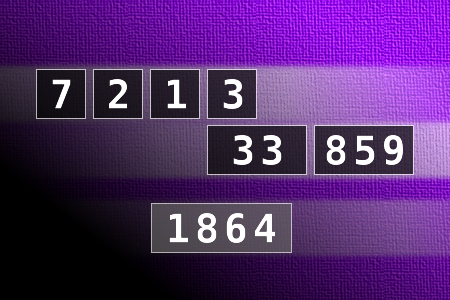Calculate the number 1864
NUMBERMANIA: Calculate the number 1864 using numbers [7, 2, 1, 3, 33, 859] and basic arithmetic operations (+, -, *, /). Each of the numbers can be used only once.Correct answers: 35
The first user who solved this task is Roxana zavari.
#brainteasers #math #numbermania


